One of the simplest ways to add value to your home is to keep a well-maintained lawn. Not only does it help with curb appeal, but it also provides a safe, comfortable area for you and your family to enjoy the outdoors.
Although the concept of caring for your lawn is simple, there’s a lot that goes into the process. However, the end results justify the work when you have the best-looking lawn in your neighborhood. In this guide, we’re going over everything there is to know about how to care for your lawn so you can create an outdoor oasis for relaxing and entertaining.
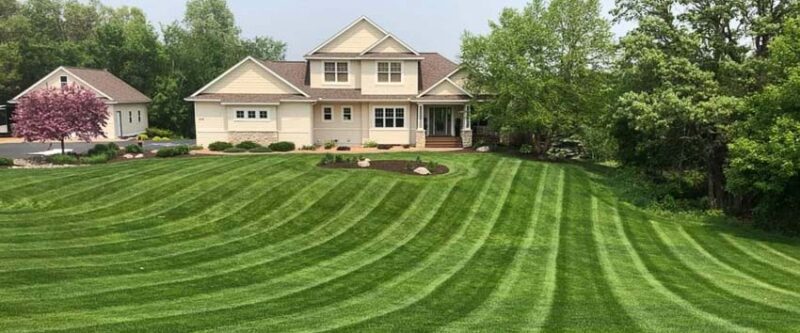
Assess Your Lawn and Make a Plan
Like with most plans, the first step to caring for your lawn is to assess the situation. Learning good lawn care habits is a challenging task, and you should objectively evaluate the condition of your lawn and soil to consider its overall health.
Some problems to look out for include drainage issues, bare patches, dead grass, and weeds. It can help to make a detailed list of potential problems and create a plan to address each concern.
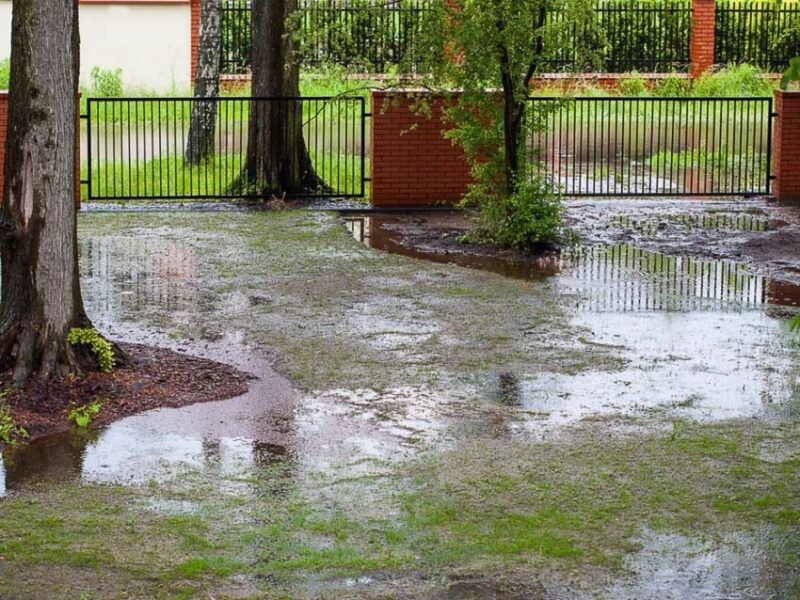
Test and Improve Your Soil
Since a healthy lawn requires healthy soil, one of the first things you should focus on for DIY lawn care is improving your soil. You should start by testing your soil to determine its health and figure out where it’s deficient.
There are home soil test kits to help you understand your soil’s health, although they may be less accurate than a lab test. For help with obtaining test kits and finding labs in your area, contact your local extension office.
The results of your soil test will let you know exactly what it needs to thrive. You can add amendments such as turf builder and compost to improve the soil’s structure, which allows for better drainage and nutrient absorption. You’ll also be able to decide which fertilizer to use on your lawn.
Repair Bare Spots in Your Lawn
Bare spots on your lawn can be caused by several factors, such as pets, diseases, weeds, and pests. These spots can be a blight on an otherwise lush, green lawn.
When you notice a bare spot, be sure to patch it immediately to prevent further damage.
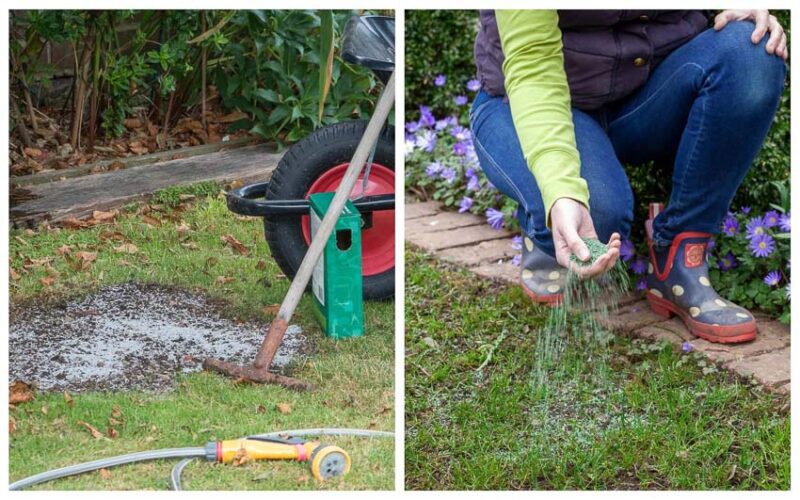
Aerating Your Lawn
Aeration is an essential lawn care step since it helps to reduce compaction, break up thatch, and improve nutrient absorption. It can also reduce runoff, which allows water and nutrients to penetrate deeper into the soil.
Some soils naturally compact more than others, but all lawns can benefit from aeration at least once per year. Understanding how to aerate your lawn correctly ensures your grass grows lush and healthy.
Dethatching Your Lawn
For healthy growth, lawns need light, water, oxygen, and nutrients. Over time, thatch builds up and needs to be removed so that your lawn can breathe and absorb nutrients and water.
Thatch is a layer of organic material that builds up between your grass and soil made up of dead roots and other plant debris. Not only can thatch limit water and nutrient absorption, but it can also be a haven for pests and diseases.
Dethatching your lawn is a relatively simple process and can make it easier to keep your grass healthy, lush, and vigorous. To dethatch your lawn, you use a special rake or dethatching machine to remove the thatch layer. After removal, you should apply a layer of topsoil and fertilizer to help aid grass regrowth.
Choose the Right Grass for Your Region
Different grass types grow better in certain climate regions, and several factors can affect grass growth in your area.
- Temperature: Warm and cool seasons significantly affect your lawn’s growth and dormancy periods.
- Precipitation: The amount of rain or snow that falls in a region will affect the health of a lawn. Too little rain or snow can cause the grass to dry out and become stressed, while too much can lead to waterlogging and disease.
- Sunlight: Too much sunlight can scorch your lawn and cause it to turn brown, while too little can cause it to be weak and spindly.
- Soil: Sandy soils are often not ideal for lawns as they can be too dry, while clay soils are prone to waterlogging.
- Wind: Strong winds can affect the health of lawns, causing the grass to dry out faster.
- Pollution: Pollutants such as car exhaust and industrial emissions can damage your lawn.
Cool-Season and Warm-Season Grasses
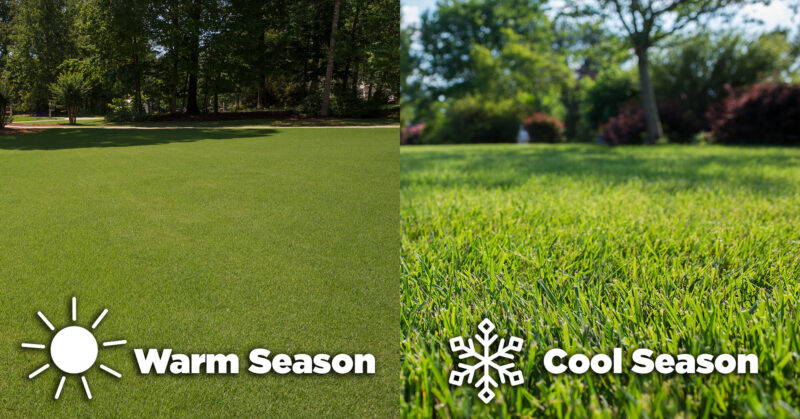
There are hundreds of species of grasses, but we can break down lawn grass into two main categories: cool-season and warm-season grasses. Both types thrive in vastly different growing conditions, so you should weigh your options when planting grass for your lawn.
Generally speaking, cool-season grasses such as Kentucky bluegrass, tall fescue, and perennial ryegrass grow best in the northern United States since they’re well-adapted to cool springs and frigid winters. Warm-season grasses like Bermuda, zoysia, and centipede grass thrive in warmer regions like the southern United States, being accustomed to hot summers and mild winters.
If you’re in the middle transitional parts of the country, you may choose a blend of warm- and cool-season grasses for your region.
Best Time to Plant Grass Seed
The best time to plant grass seeds depends on factors such as your region and the type of grass you’re planning on growing. Make sure the peak growing conditions for your grass type match the current climate in your region.
When growing cool-season grasses, you should plant grass seeds in the fall. This is because your lawn will have three seasons to establish itself before it’s threatened by hot weather. If you plant it during the spring, you will have to water it more often in the summer, which may be affected by the hot summer sun.
Spring is the best time to plant warm-season grass. Spring brings warmer weather and plenty of rain, leading to fast seed germination. These grass types are also resistant to drought and hot weather.
How to Plant Grass Seed
Once you’ve tested your soil and chosen the right type of grass to plant, you should follow best practices and use quality seeds and materials for your lawn. Knowing the right way to plant grass seeds goes a long way, whether you’re patching a bare spot or reseeding a whole lawn.
First, prep the soil for planting and add soil amendments. Smooth the soil with your rake, and then either spread the grass seed by hand or use a broadcast spreader for larger areas.
Grass seeds need about a 1/4-inch of soil on top of it. Rake the area a final time to make sure the seeds are covered and the ground is level.
You can use an erosion mat or weed-free mulch to protect the seeds and keep them in place. Gently water your lawn, making sure to not over-water to avoid washing the grass seed away. Repeat this watering process two or three times per day until the grass has grown to around one inch in height.
Usually, grass seeds germinate in about 5 to 7 days, however, sometimes it can take up to three or four weeks. Once you notice growth, you can taper off your watering schedule.
At this point, you can drench your lawn deeply to encourage deep root growth. When your grass is about three months old, you can start mowing it.
Fertilize Your Lawn
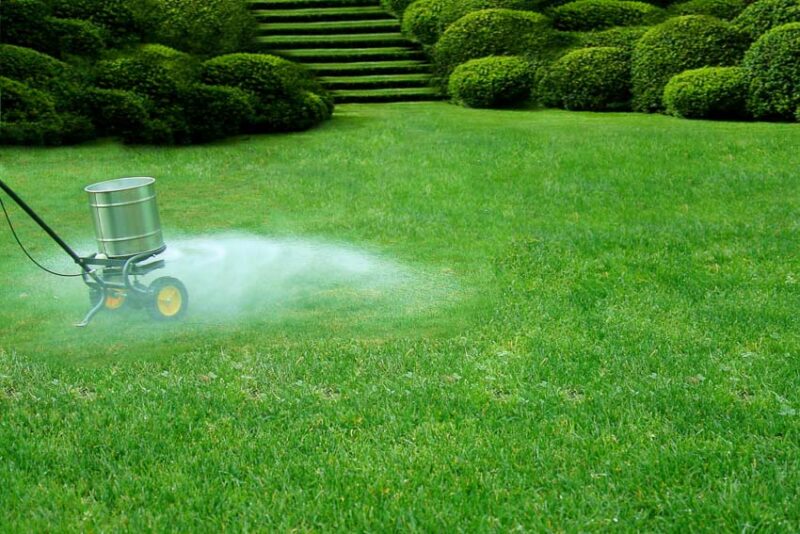
Fertilizing your lawn keeps it healthy, green, and lush, making it an essential part of grass maintenance. Fertilizer supplies essential nutrients to the grass and soil.
Healthy grass makes it more difficult for weeds to grow and also helps prevent pests and diseases, which means fertilizing can save you a lot of trouble down the line.
Lawn fertilizers contain varying amounts of three nutrients: nitrogen, phosphorous, and potassium, and can be designed for slow-release or special applications. Knowing what type of fertilizer to use for your lawn is an essential part of fertilization.
There are several factors that will affect what fertilizers you choose to use on your lawn. It’s common to fertilize a lawn three to four times per year, with most applications occurring in the spring and fall. If you live in an area with high temperatures and low rainfall, it may be necessary to fertilize more often.
When applying fertilizer, be sure to spread it evenly across the entire lawn. A fertilizer spreader can help you achieve even distribution throughout the entire area.
Follow the instructions on the fertilizer label to determine the amount to use on your grass.
How to Care for Your Lawn by Using Weed Control
Controlling weeds in your lawn requires a strategic approach and a persistent effort. You should start with identification to see what kind of weeds you’re dealing with. Understanding how they grow will help you decide how to combat them best.
Not all weeds are created equally, and thus they require different eradication methods. The most common lawn weeds include dandelions, crabgrass, broadleaf plantain, and quack grass. However, there are tons of other weeds, making it essential to recognize what you’re dealing with before you start using products on your grass.
Weeds swoop in to take advantage of your grass’s nutrients as soon as you let your guard down. Herbicides may be necessary in some instances, but simply pulling weeds by hand is often the easiest way to kill them.
Taking the time to understand weed growth habits can help you avoid providing them with peak growing conditions. For instance, if you’re trying to kill crabgrass specifically, be sure to keep your grass at least three inches tall and use a crabgrass preventer early in the spring to keep it from sprouting.
Finally, mowing your grass too short in the spring can create the perfect conditions for crabgrass to germinate.
How to Mow Your Lawn Correctly
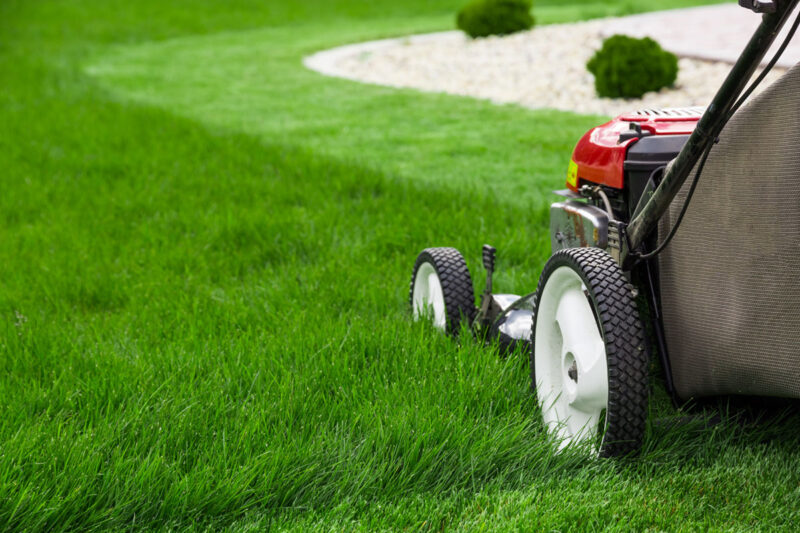
Maintaining a regular lawn mowing schedule ensures healthy grass growth. It can reduce the spread of pests and disease, as well as enhance your home’s curb appeal.
A good-looking, well-manicured lawn starts with the right equipment and supplies. Here’s a rundown of the basic tools you’ll need to cut and trim your lawn:
- Lawn mower– Get one that matches the size of your yard. For large yard care, you’ll need a riding lawn mower.
- String trimmer– You need a trimmer to reach places your mower can’t. Choose between gas and electric models.
- Edger– Use edgers to create a distinct edge along borders.
- Lawn rake– Use a lawn rake to clean up large clumps of clippings.
Mow for Height and Health
Mowing regularly will keep your lawn healthy while reducing weed growth in the process. It also improves air circulation, increases sunlight exposure, and encourages deep root growth.
Keep in mind that mowing is essentially pruning. You should never cut more than 1/3 of the grass’s height. This can cause stress on your lawn, leaving it vulnerable to pests and diseases. Mowing your lawn too short may also invite weeds to germinate.
Some grass types prefer to be kept shorter than others. Here’s a brief guide to common grass types and the best mowing heights for them:
| Type of Grass | Species | Mowing Height |
|---|---|---|
| Cool-season | Fescue | 2 to 3 inches |
| Kentucky Bluegrass | 2 to 2.5 inches | |
| Perennial Ryegrass | 2 to 3 inches | |
| Annual Ryegrass | 2 to 3 inches | |
| Tall Fescue | 2.5 to 3.5 inches | |
| Warm-season | Zoysia | 1.5 to 2 inches |
| Centipede | 1.5 to 2 inches | |
| Bahia grass | 2 to 3 inches | |
| Bermuda grass | 1.5 to 2 inches |
When to Mow Your Lawn
The length of time between mowing sessions depends on how quickly your grass grows. Start mowing in the spring when the temperatures start to warm up to around 40°F.
During peak growing season in the summer, you may need to cut it every 5 to 6 days, and you can continue this schedule until it stops growing in the fall.
It’s best to avoid mowing after it rains or in the early morning when your grass is still covered in dew. This is because grass clippings clump together and blades bend over when grass is wet, making it nearly impossible to get a neat cut.
While you should mow when the grass is mostly dry, try to avoid the hottest parts of the day. Freshly cut grass blades can turn brown in the direct sunlight, inviting pests. Always use sharp blades to avoid ripping the grass, and change your mowing pattern every time you mow to keep it growing straight.
How to Care for Your Lawn by Watering it Properly
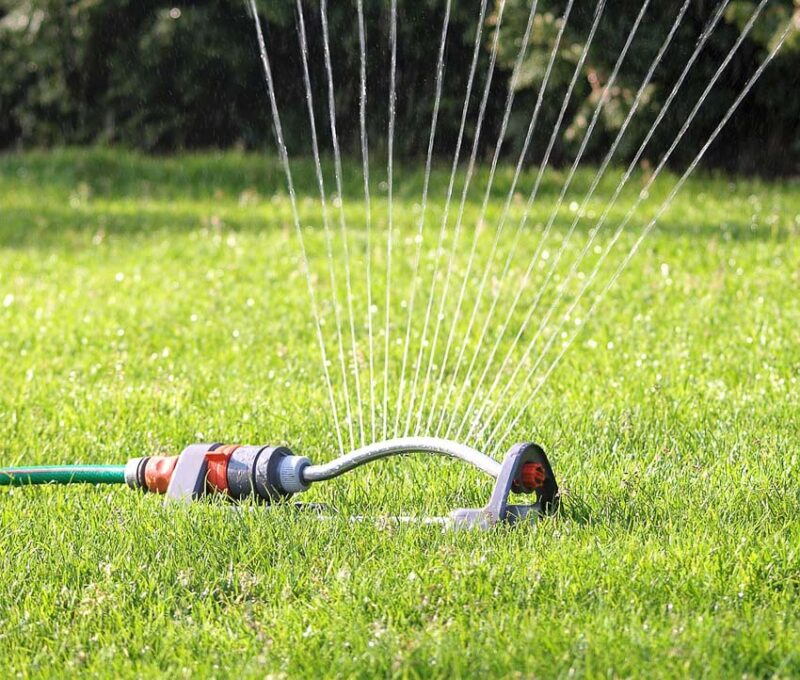
When it comes to watering your lawn, there are no hard and fast rules since climate seasons vary, and different grasses require different amounts of water.
A good rule of thumb for a fully established lawn is to water it equal to about one inch of rainfall per week, but how often you water your lawn will change throughout the year.
When to Water Your Lawn
There are several factors that go into how often you should water your lawn, including rainfall, soil type, grass species, sun, and shade. The following tips can help you determine the best times to water your grass.
- Water early in the day because it evaporates when you water it in the middle of the day.
- Watering at night encourages plant diseases and fungi.
- Water less in the cool seasons and more often in the warmer months. In cooler regions, lawns don’t need watering from late fall to early spring.
- Use a rain gauge to determine how much water your lawn is getting, whether it’s from rainfall or your sprinkler.
- Probe the soil to determine the moisture level in your soil. When it’s dry at a depth of 4 to 6 inches, it’s time to water.
- Pay attention to the color of your grass. When it needs water, it loses its vibrancy and turns a blue-gray color.
- Your footprints will disappear quickly if your lawn has enough water. If it takes longer than a half hour, it’s time to water your grass.
A sprinkler system can make watering your lawn easier, but you should still pay attention and adjust your system so your lawn gets the right amount of water. Too much water can be just as bad for your lawn as not enough.
How to Provide Seasonal Lawn Care
No matter what season it is, there are a few DIY lawn care tasks you should do throughout the year to keep your lawn looking its best. Use the following information to stay on top of lawn tasks all year long.
How to Care for Your Lawn in the Winter
No matter what your climate region is, winter is a good opportunity to ensure your lawn is ready to grow and flourish in the spring. Depending on your local weather conditions, you can remove debris, aerate, and overseed your lawn during the winter.
Keep large objects like lawn furniture and kids’ toys off of your lawn throughout the winter. These items can damage your lawn when left for long periods, even if your yard is covered in snow.
Use caution when employing de-icing products on paths and driveways next to your grass. The runoff from these products may damage your lawn.
How to Care for Your Lawn in the Spring
Spring is when your lawn care schedule should kick into high gear. There are several important tasks that need to be done in the spring to ensure your grass grows in lush and green.
Fertilizing, mowing, and taking care of weeds are all priorities in the spring. Nutrients provided by fertilizers help your lawn to thrive and promote new growth.
You should also mow regularly during the spring, but remember not to cut your grass too short. Use spring fertilizers containing pre-emergent herbicides to combat weed growth in your lawn.
There’s usually plenty of rainfall in the spring, so your lawn will only need a little extra water. However, pay attention to signs that it needs water since climate regions can differ in the amount of rainfall.
Most lawns only require aeration once or twice per year, so spring is the perfect time to aerate your lawn. It’s also the best time to fix bare patches in your grass by overseeding.
How to Care for Your Lawn in the Summer
Your lawn in the summer is a reflection of all the work you put in during the spring. Fertilize your lawn at the beginning of the season, keep it watered, and stick to a mowing schedule of every 5 to 6 days to prevent weeds from germinating.
Deep watering in the morning is best during the summer. Be on the lookout for pests and diseases, and treat your lawn with insecticides or fungicides if necessary.
For weeds that have germinated, you should switch to a post-emergent herbicide to keep them from going to seed. Identify what weeds you have growing, and apply the recommended herbicides on hot, sunny days without wind.
It’s also important to maintain your lawn equipment throughout the summer. While it’s common for lawns to go dormant during the hottest parts of the year, keeping your mower blades sharp will ensure good, clean cuts and help prevent your grass from turning brown in the heat.
How to Care for Your Lawn in the Fall
The fall season presents an excellent opportunity to plant cool-season grasses and repair bare spots in your lawn. While you may not have to water as much, you’ll still need to keep dead leaves and debris off of your lawn.
During the fall, you can mow your grass shorter. Weeds that germinate during this time will die when the grass freezes, and short grass also keeps your lawn from getting smothered under the snow.
Fertilize your lawn early in the fall to promote thick growth. You can also fertilize in late fall since the roots will continue to absorb nutrients as the season changes. When your lawn grows back in during the spring, you’ll have fewer weeds due to the thick fall growth.
It’s a good idea to clean your lawn care equipment before storage in the fall and drain any fuel in your mowers and trimmers. This is also a good time to sharpen your mower blades so they will be ready for the first mow in the spring.
More Tips on How to Care for Your Lawn
Taking care of grass is no small feat, and there’s a lot to learn about your climate, grass, and soil to care for your lawn to the best of your ability.
Here are a few more tips for taking care of your grass.
Tip 1: Apply Herbicide to Stop Crabgrass
Crabgrass is one of the tougher weeds to eradicate, but understanding how it grows and how to properly utilize herbicides will help you kill crabgrass in your lawn.
Tip 2: Add Mulch to Protect Trees
Mulch can protect young trees from getting damaged by string trimmers and edgers. While tree guards are also an option, mulch keeps your trees from competing with the surrounding turf for water and nutrients.
Mulch protects mature trees, as well. Bare ground can expose tree roots to the elements. Adding mulch protects the roots of your trees and improves your home’s curb appeal.
Tip 3: Plant Ground Covers in Shady Areas
If you’re finding it difficult to get grass to grow in shady parts of your yard, consider switching to ground covers instead. Ground covers require minimal care compared to grass, and also help reduce weeds. There are several varieties to choose from, each with their own colors, flowers, and textures to add depth to your landscape.
Tip 4: Add Pathways and Fencing
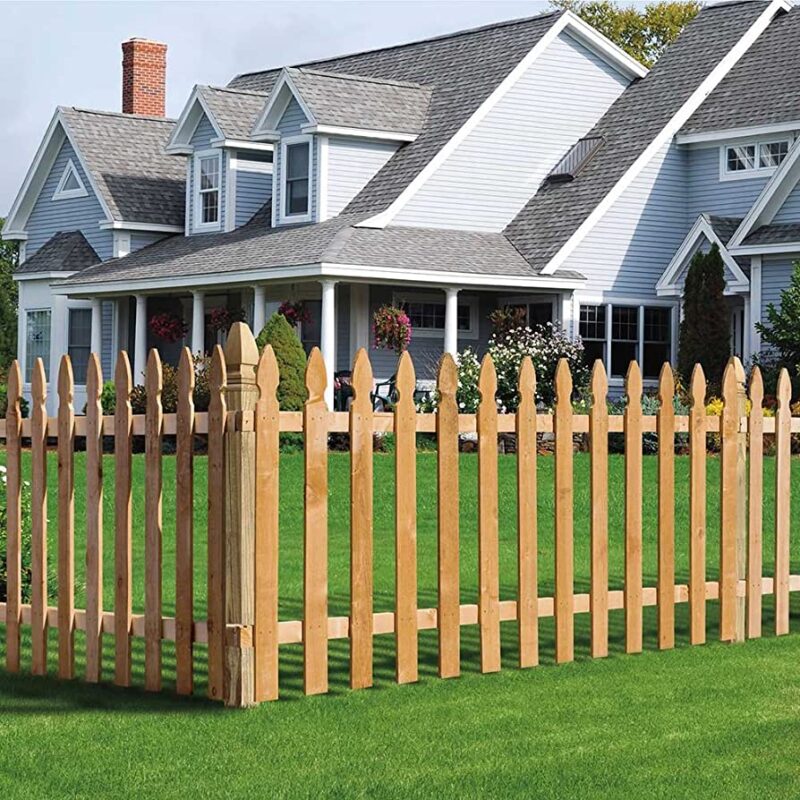
One of the leading causes of bare spots in many lawns is foot traffic. If there’s an area where foot traffic is causing bare spots in your yard, a pathway may be the solution you’re looking for to add character and charm to your landscape.
Another way to protect your lawn and keep people from walking through certain areas is to add fencing. You can use small sections for specific areas, or install a fence around your home’s perimeter. There are tons of types of fencing to choose from in a variety of aesthetics to add to your home’s curb appeal.
Tip 5: How to Care for Your Lawn by Using a Mulching Lawnmower
Mulching lawnmowers finely chop your grass clippings and spread them on your lawn as you mow, saving you time and money.
You don’t have to worry about bagging or disposing of your clippings since they will break down and provide nutrients for your lawn. Be sure to remove large clumps of lawn clippings, however, as they can smother your lawn and cause bare spots.



